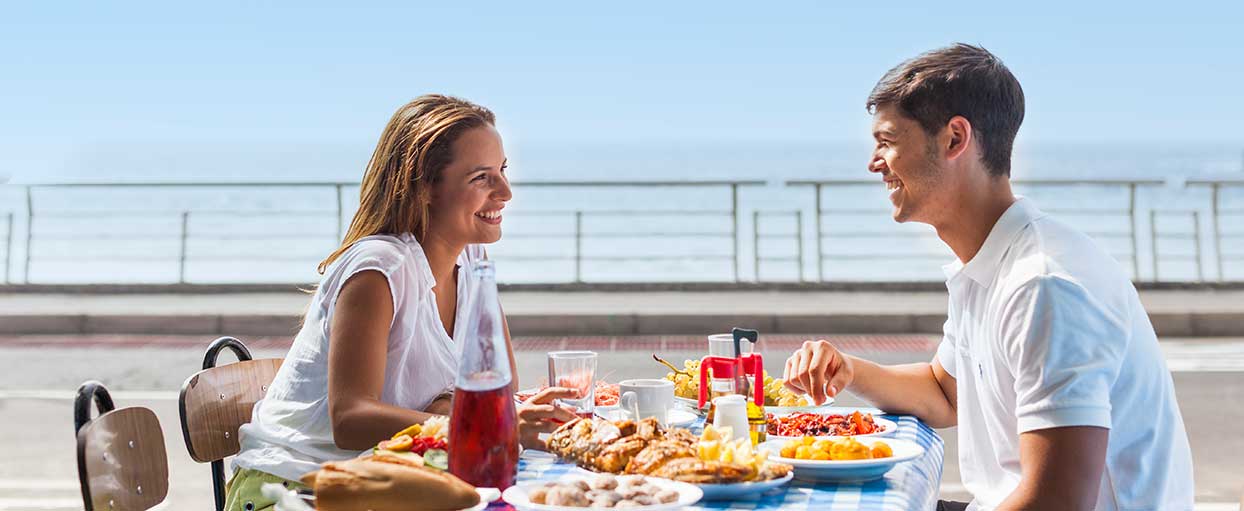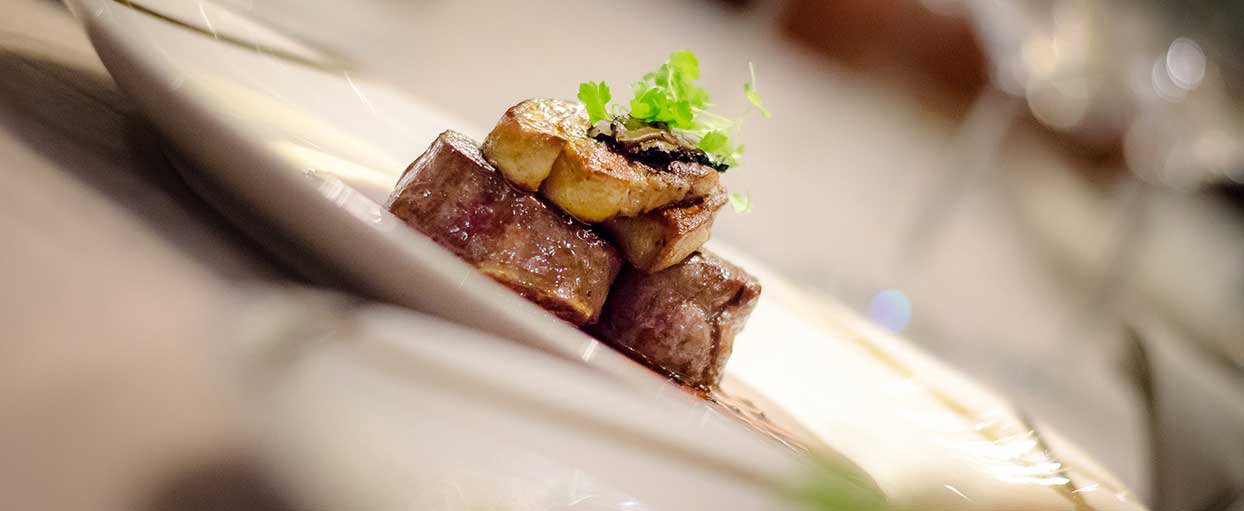The Castillo de San Juan is considered the second most important defence fort built on the coast of Santa Cruz de Tenerife. Construction began in 1641 and the fort was given the name of ‘black castle’ because of the dark volcanic stone used, although another version says the fort got its nickname from an old place name, the black cove. Commemorative acts remembering the defence of the city from Nelson’s failed assault in 1797, the so-called Gesta of July 25 (the Battle of Santa Cruz) are held here.
[/tabitem] [tabitem]SHOPPING:
With an average temperature of 21 degrees all year round, Santa Cruz is the perfect place to shop in the most extensive open shopping area of the island. Small shops and big brands mingle in an outdoor setting where locals and visitors turn shopping into a unique experience. There is a great variety of shops, cafés, bars, and restaurants to spend a pleasant day browsing and relaxing. The city has the best boutiques and international brands with the latest fashion trends on display in their shop windows. Throughout the city’s shopping streets, large department stores and shopping malls coexist with traditional, small shops where a personal shopping experience and product quality are in the forefront. All of this is wrapped up in a pleasant, friendly atmosphere that makes you want to stroll along the city’s streets, parks, squares and gardens and to sit down to have a drink at any of its many bar terraces.
The shops’ and restaurants’ closeness to each other turns visiting Santa Cruz into a unique experience. The city is easy to access and equipped with enough parking and public transport services: trams, buses, and taxis.
We suggest you see the city by taking some of the following shopping routes:
Route 1 City Centre: Calle Pérez Galdós, calle Viera y Clavijo, calle Méndez Núñez, calle Pi y Margall, calle Suárez Guerra, calle El Pilar, shopping centre “Centro Comercial Parque Bulevar”, calle La Rosa and nearby streets. Enjoy this shopping experience in an area where you can find all kinds of stores offering clothing, accessories, footwear, jewellery, watches, perfumes… This route contains a great number of boutiques showcasing leading brands, with exquisite service and a wide range of unique designs.
Route 2 City Centre: Plaza de La Candelaria, calle Castillo, calle Imeldo Serís, calle Valentin Sanz, calle Bethencourt Alfonso and nearby streets. In the heart of the city you will find the street calle Castillo, a traditional shopping street with all kinds of international franchises and fashion retail chains. The route follows this street, which begins in Plaza de Candelaria and ends at Plaza Weyler.
Route Ramblas: Plaza Weyler, Rambla Pulido, Rambla de Santa Cruz and nearby streets. This route is characterized by a concentration of the commercial activity around both Ramblas: Rambla de Santa Cruz and Rambla de Pulido. There you will find a wide range of shops characterized by the kind service and the quality of products. Along the Rambla de Santa Cruz you can enjoy an exhibition of Sculptures in the Street, which makes the shopping experience much more enjoyable.
Route Shopping Centres: This route is characterized by the presence of large department stores and shopping malls around which one can find a wide array of smaller shops and restaurants to suit all tastes. The main streets are Avenidas Tres de Mayo and Manuel Hermoso Rojas, calle Álvaro Rodríguez López, calle Aurea Díaz Flores and Avenida La Salle. Along this route you can enjoy a wide variety of leisure opportunities inside the shopping centres (cinema, restaurants and personal services) as outdoors (Auditorio de Tenerife Adán Martín, Recinto Ferial de Tenerife, Parque Marítimo César Manrique and Palmetum).
Route Market “Nuestra Señora de Africa”: La Recova, Rambla Azul, shopping centre Recova and Rastro de Santa Cruz (only Sundays). The Market’s shopping area is one of the busiest commercial districts on Santa Cruz. Its central nucleus is the Market of Santa Cruz de Tenerife, or La Recova. It has been open since 1944 and is the successor of the Old La Recova, which goes back to the 19th century. Here you can find the freshest foods from the Canary Islands and from all over the whole world. It specializes in fruit and vegetables, meats and fish, although you can purchase all sorts of foods there, as well as typical products.
The Neo-Colonial building that houses La Recova, is arranged over two large floors, with open patios where you can take a pleasant stroll and enjoy admiring the great variety of fresh foods for sale. Inside you will find a Café with terrace, a place to rest and enjoy food and all types of drinks. Opening hours of the Market Nuestra Señora de Africa are Monday to Saturday from 06 a.m. to 2:00 p.m., and Sundays from 7:00 a.m. to 2:00 p.m.
Next to the market you will find La Rambla Azul, its opening hours are from Monday to Sunday 9 a.m. to 2 p.m. There is also the Shopping Center with more than 40 shops and cafeterias, it opens from Monday to Saturday 9 a.m. to 9 p.m. and Sundays from 9 a.m. to 3 p.m.
Sundays morning are the days that the ‘Rastro,’ the large street market of Santa Cruz, is held at Avenida José Manuel Guimerá, surroundings of the open market Recova and Calle Bravo Murillo. Here you can find a great variety of first and second hand articles, antiques, clothes and fashion accessories in a festive and friendly environment.
GASTRONOMY:
Santa Cruz is the heart of Tenerife and as such it is the home of a range of food and drinks. All parts of the world are represented in the municipality. It’s a place where the food sector has experienced a remarkable growth in the last few years and the zone is known for being a metropolitan area that is home to two stars from the prestigious Michelin Guide.
The gastronomy is undoubtedly part of the local character of a culture. In this sense, the Canary Islands can proudly say that their cuisine is both simple and original in nature and that this is true in terms of the choice of ingredients and how dishes are prepared, with the Islands’ cuisine being based on the Guanche heritage, but also having a clear Spanish influence.
However, despite its simplicity, traditional Canarian cuisine is authentic and rich in flavours that give it a personality of its own – a personality that has been influenced by the Island Chain’s climate and the use of the products readily available in its sea and on its land.
Among the ingredients of traditional Canarian cuisine, some of the most important are products from the sea, such as fish and shellfish like the “vieja” (Mediterranean parrotfish), a white fish with a mild flavour, the “choco” (cuttlefish), a type of squid with a larger size, and the “cherne” (wreckfish), a fish that is consumed salted or as a stew.
In terms of foods from the land, the sweet potato and the potato are the indisputable companions to meat and fish, with the potato being famous in its “papas arrugadas” form (“Canarian wrinkly potatoes” – boiled potatoes with their skins left on). Vegetables such as the tomato, onion, garlic, varieties of peppers, squash, zucchini (or “bubango”), watercress, coriander, and parsley can be used in soups, stews, and in the preparation of the famous Canarian “mojo” sauce in its two versions: green (containing coriander) and red (“mojo picón,” containing pepper).
In terms of meats, noteworthy are dishes based on pork, rabbit, and kid goat, all of which can be prepared with a sauce as a stew, fried, or roasted.
Goat’s milk is the basic ingredient of the cheeses from the Canary Islands, which are consumed fresh, semi-cured, cured, and even smoked.
But there is a Canarian food product that is derived from grains like corn, wheat, and barley and which has become established as a “symbol” of the gastronomic culture of the islands. It is known as “Gofio” (a fine mixture of the aforementioned grains previously toasted and ground) and it has multiple culinary applications, as it has acted as the “bread of the canaries” (kneaded with water and not cooked), it can be consumed “scrambled” with broth (escaldón) or a stew, and it can even be mixed with honey and almonds to act as a desert. Its consumption is so widespread that, in many homes, it is customary to mix gofio with milk and sugar and use it for breakfast. Other products that complement the cuisine of the Canary Islands are the local wines from the region, with Tenerife being the perfect example. The island is divided into five wine-producing districts, and Santa Cruz de Tenerife is located in the Tacoronte-Acentejo district. Tenerife’s gastronomy brings together the products and dishes that are most representative of Canarian cuisine with a wide range of dining establishments.
One of the increasingly popular trends over the past few years is the diversification of traditional cuisine, giving rise to a new, more creative and contemporary branch of cooking known as “signature cooking.” While this type of cuisine keeps its base through the use of traditional products, it innovates by introducing new and exotic ingredients (many of them foreign) and a mix of flavours that bring originality to the recipe. Likewise, emphasis is placed on the dishes’ presentation, turning them into artistic creations done by expert chefs.
The dining sector of the municipality of Santa Cruz de Tenerife has it all. Visitors can find the best of the traditional cuisine mostly in restaurants or “guachinches” around the Anaga area. In the rest of the city, there are establishments that offer everything from traditional Canarian cuisine to exquisite “signature cooking” and more creative dishes, without forgetting the wide range of regional Spanish specialties, bars serving “tapas,” and a great variety of restaurants that offer international cuisine.
[/tabitem][/cq_vc_tabs]







